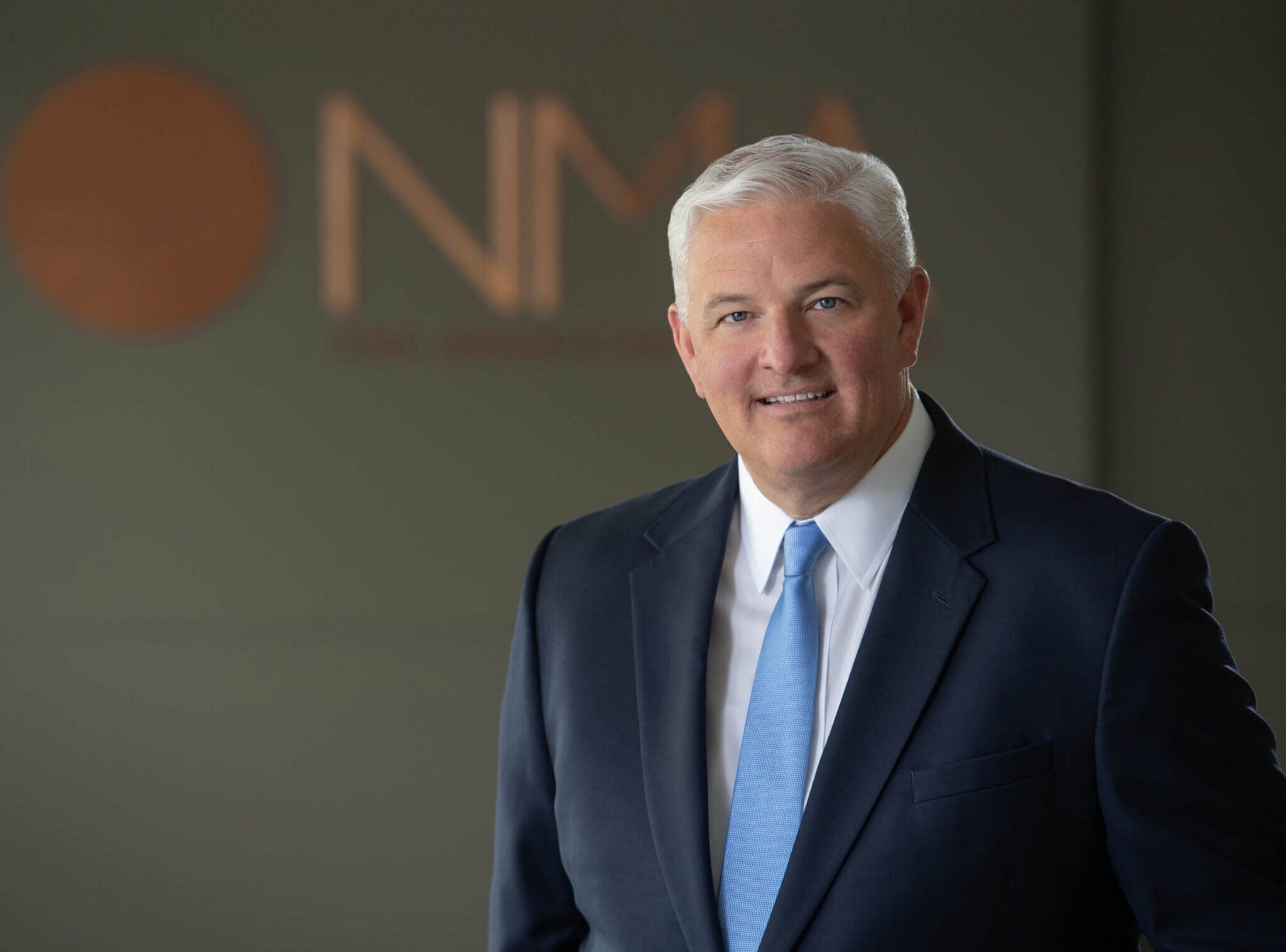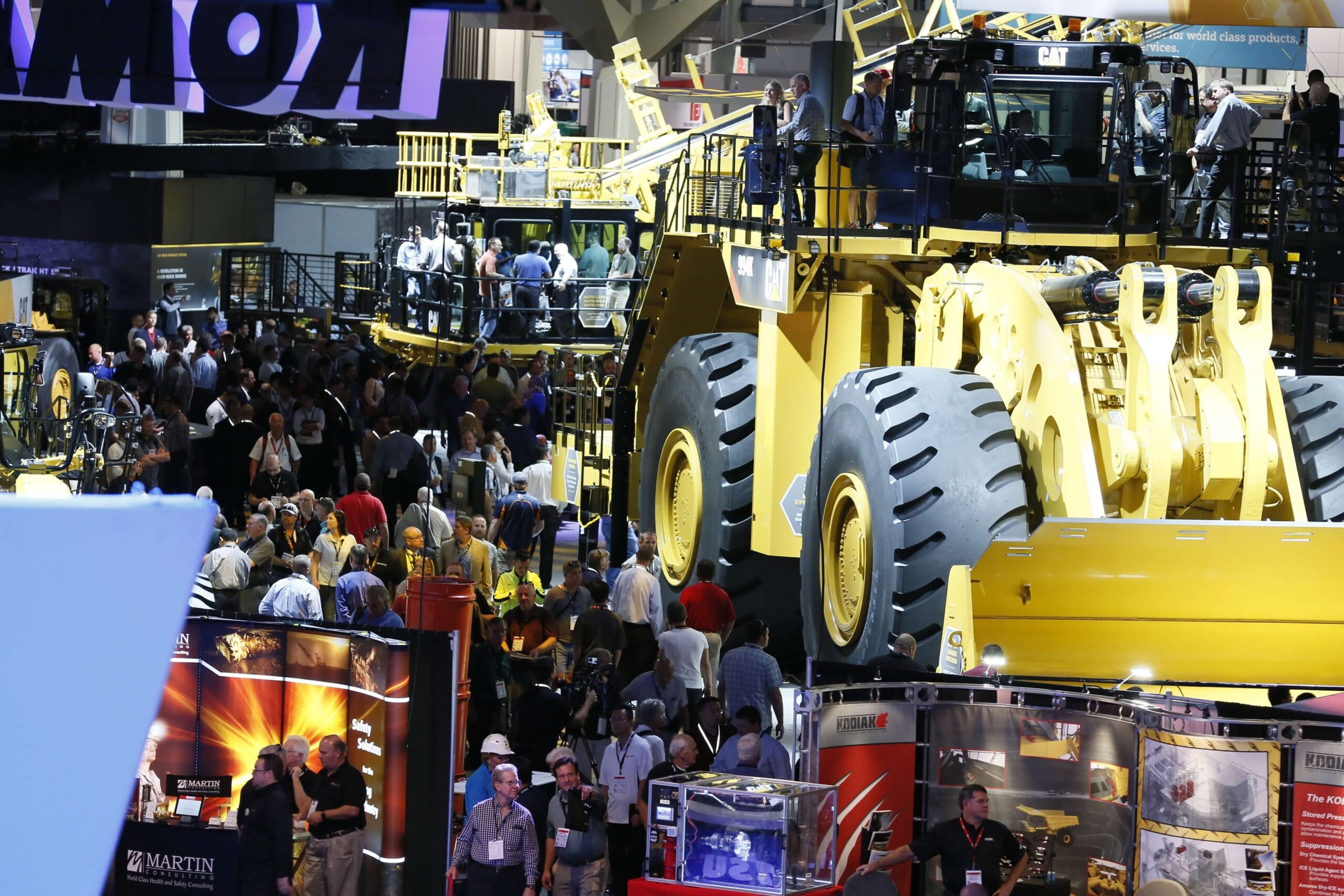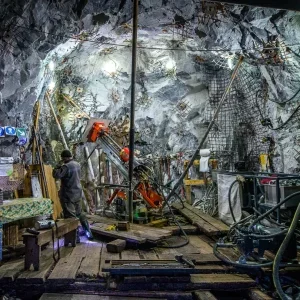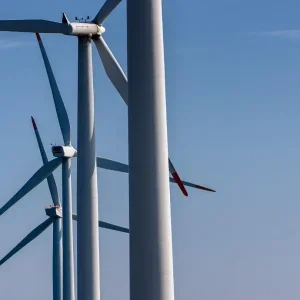
A year and a half into the global pandemic, the mining industry is working hard to recover from the disruption caused by Covid-19. At the same time, perspectives around mining have been changing, as the industry is set to provide the metals and materials needed to make batteries, wind turbines and solar panels to power the green energy revolution. Rich Nolan, president and CEO of the National Mining Association (NMA), speaks to Nicholas Kenny to discuss his vision for the future of the industry and the action that needs to take place today.
Historically, mining has been at the heart of all human development, since the transition of cavemen from the Stone Age into the Bronze and Iron Ages. Our progress as a species has been measured in terms of the metals and fuel we dug from the ground powering us through industrial revolutions, wars and technological advancement.
And while much has been made of the destructive ability of the industry, less time is spent reflecting on its enormous potential to build and create. On 24 January 1848, a man named James W Marshall discovered gold in the water wheel of the eponymous lumber mill at Sutter’s Mill in Coloma, California. Despite being sworn to secrecy by the mill’s owner, who feared for his plans to build an agricultural empire if word got out, Marshall had a loose tongue, and the news spread.
The California Gold Rush that sparked off from this moment ran from 1848–1855 and brought roughly 300,000 people to the area to take part in the hunt for the precious metal. The sudden influx of gold into the money supply reinvigorated the US economy and the subsequent rapid population explosion allowed California to swiftly push for statehood, which it duly received in 1850.
The city of San Francisco owes much of its existence to this period of time. It had been a tiny settlement before the rush began, but swiftly boomed as merchants and new people arrived, causing the population to leap from 1,000 full-time residents in 1848 to 25,000 by 1850. It was, in a very real way, built on the back of the mining industry, and is just one example of creative potential of mining. The city would prosper and eventually go on to give the world the United Nations in 1945, the Summer of Love in 1967 and modern-day Silicon Valley.
Graphite, lithium and cobalt are the key to the US’s green energy plans
Silicon, however, is not one of the minerals that holds Rich Nolan’s attention. As the president and CEO of the National Mining Association (NMA), his focus is on graphite, lithium and cobalt – the metals that will help propel the US’s current green energy initiatives – and on helping the industry recover from the disruption caused by the Covid-19 pandemic.
The NMA is the national trade association for the US mining industry, representing coal, metal and industrial mineral producers, mineral processors, equipment manufacturers and other suppliers of goods and services to the domestic mining industry. It is the only national trade organisation that represents the interests of US mining before Congress, the presidential administration, federal agencies, the judiciary and the media.
A year and a half into the pandemic, the NMA’s top concern continues to be the safety of its workforce, “similar to every other essential industry that has continued to work to provide invaluable resources for our country throughout this crisis,” says Nolan. “Our members worked to adjust to the unprecedented challenge presented by the pandemic, following government guidelines with distancing measures, increased cleaning schedules, and limits on gatherings of groups, and our efforts have not stopped there.”
As the self-proclaimed “US mining industry’s voice and biggest advocate”, Nolan has played multiple roles in the NMA over the course of his more than 20 years of experience advocating on natural resources sector issues, previously serving for 13 years as senior vice-president of government as well as political affairs.
Nolan’s current role involves leading the NMA’s public policy efforts before Congress, regulatory agencies and the White House, and setting the strategic agenda for media relations, grassroots communications and political involvement.
It’s unsurprising, then, to learn that his career began on Capitol Hill, where he served as an aide to several members of Congress and worked as an advisor on multiple campaign committees. Currently, he is also a member of the Board of the US Energy Association and serves on the National Coal Council, a Federal Advisory Committee to the US Secretary of Energy.
The importance of investing in mining
In many ways, then, Nolan has served at the forefront of where the US mining industry meets national politics. He has been breathing DC politics for several decades, which gives him a unique insight into how the Biden administration’s future green energy plans are set to affect the sector.
Speculation has steadily grown over the upcoming American Jobs Plan that looks to tackle the US’s crumbling infrastructure, while also taking strides to tackle climate change, with reports estimating the planned spending to come in the region of $2trn.
This plan will reportedly cover everything from building electric vehicle charging stations and power lines that can deliver more renewable energy, to capping oil and gas wells to reduce emissions and reclaiming abandoned coal mines.
Funding will be provided towards the construction of about a million affordable, energy-efficient houses and to improve the energy efficiency of existing structures. Hundreds of billions of dollars will go towards high-growth industries with an eye on the future, such as advanced battery manufacturing.
“The Biden administration has been laser-focused on job creation, infrastructure, green energy and the electrification of our transportation sector – and mining is central to each,” Nolan points out.
The advanced technologies that are essential for the future that the Biden administration has laid out – especially where the green energy goals and support for EV production are concerned – all depend on the domestic mining industry.
The World Bank has estimated that the production of minerals like graphite, lithium and cobalt could increase by nearly 500% by 2050 in order to meet the growing demand for advanced energy technologies. For Nolan, then, it’s pivotal that the US invests in the mining operations taking place on its own soil if the country hopes to have its demands met.
“For far too long, our minerals import reliance has been a silent, growing threat to the country. But the Covid-19 pandemic increased [US] awareness of the dangers of a heavily import-dependent and vulnerable supply chain,” he says, pointing out that the US’s import dependence for key mineral commodities has doubled over the past three decades.
“The US is now 100% import-reliant for 17 key minerals, and 50% or more import-reliant for an additional 29 key mineral commodities. All that is despite the fact that we have significant mineral deposits of some of these commodities within our own borders.”
However, Nolan believes that things are starting to move in the right direction. Given the executive orders that have already come out of the administration, its examination of supply chain vulnerabilities and other actions, he’s confident that the Biden administration understands the importance of the key issues facing the US mining industry.
More importantly, he believes they will actively work alongside US industries to better shield them from the extended, complex and fragile supply chains that have been so exposed by the global pandemic.
On coal, for example, the Biden administration has expressed support for the advancement of carbon capture projects, which Nolan sees as essential to addressing the world’s climate challenge.
“On the campaign trail, President Biden called for doubling down on carbon capture and we’ve seen similar enthusiasm from his administration,” he says, with a hint of satisfaction. “And the focus on infrastructure projects – which will require a substantial amount of steel – is significant for metallurgical coal producers.”
Indeed, consultancy CRU Group estimates that $1trn of spending could require an additional six million tonnes of steel, 110,000t of copper and 140,000t of aluminium annually. At the moment, the domestic mining industry is poorly placed to handle that kind of demand, which means that unless action is taken, significant amounts of these metals will have to be imported into the country at great cost.

US mining needs to boost its competitiveness on the world stage
“Our import reliance is alarming, having doubled over the past three decades. Why is that?” Nolan asks. “The key word for this industry is ‘competitiveness’. These are global commodities and we know for many of these metals, US miners are up against competitors that have full-throated government backing, and that don’t operate under the same environmental or labour standards.”
These competitors that Nolan speak of are a varied and diverse bunch, but the biggest by far is China. It may have been the first country hit by the Covid-19 pandemic, but it was also the first to begin recovering from it.
So, while the rest of the world bunkered down in lockdown, China took full advantage of the plunging commodity prices in March and April 2020, importing 6.7 million tonnes of unwrought copper that year – a full 1.4 million tonnes more than its previous record.
These commodity purchases come as part of a broader series of investment by the Chinese state, which has been spending hugely on infrastructure for the past two decades. It is also the largest producer of rare earths, which are integral to just about all of the high-tech applications in development today.
It’s by far the biggest processor of the raw materials used to make lithium ion batteries – lithium, cobalt, nickel and graphite – which will serve as the cornerstone in any green energy revolution. While just 23% of the world’s battery raw materials are mined in China, 80% of their intermediate processing takes place there.
In the face of Chinese dominance in this area, Nolan remains bullish, but stresses the need for the US to boost the competitiveness of its domestic mining industry on the global stage.
“We need action to improve mine permitting – the fact that it takes seven to ten years to permit a mine in the US, compared with just two to three in Canada and Australia, is nonsensical,” he says. “And, so, it would be counterproductive to roll back the much-needed National Environmental Policy Act (NEPA) reforms implemented by the previous administration.”
Here, he is speaking about reforms finalised by the Council on Environmental Quality in July 2020, which was intended to update regulations that had first come into effect in 1969, and largely remained unchanged since 1978.
These changes, brought about by the Trump administration, were intended to help federal agencies expedite environmental reviews by placing a stricter limit on their duration.
Similarly, Nolan hopes to see action taken towards ensuring the mining industry has access to the US’s vast resources, rather than locking them away. Most importantly, and here he quotes the US Secretary of Energy Jennifer Granholm, saying that she “has warned in reference to our alarming reliance on China for too many critical products and materials, we can’t ‘bow to the altar of low cost’, and put security of supply, [US] workers and responsible development second”.
In order to meet the Biden administration’s green energy goals, then, Nolan and the NMA have worked hard to make it clear that “‘made in America’ must include ‘mined in America’”. That’s particularly relevant within the administration’s push to source some of the advanced energy technologies – such as EVs – from manufacturers in the US.
Building the responsible, advanced energy industrial base the administration’s current agenda envisions is dependent on the materials produced from US mines, by US miners.
“I don’t think it’s an exaggeration to say that there will be no green energy movement without the mining industry,” Nolan says by way of conclusion, before laying out the challenge that lies ahead. “The International Energy Agency is talking about lithium demand growing 40-fold by 2040, followed by graphite, cobalt and nickel where the number is around 20–25 times more.
“We will need to produce the same amount of copper in the next 25 years as humanity has produced in the past 5,000. As the CEO of a lithium producer recently said, demand is about to go ‘vertical’,” he adds, referring to statements made by Piedmont Lithium CEO Keith Phillips back in February 2021.
Looking ahead to MINExpo 2021
Nolan offers some words of encouragement for the industry ahead of the upcoming MINExpo 2021 event at the Las Vegas Convention Center in September, which is organised by the NMA and returns after taking a year off due to the pandemic.
“Our industry is used to operating in extremely difficult conditions, and we have a strong track record of innovating and developing new technologies to tackle seemingly insurmountable challenges,” he says.
“I think we will see more of that creativity dedicated to developing technologies that will continue to reduce the impacts of our projects on the environment, and I look forward to seeing some of those technologies on display on the floor of MINExpo.
“We are coming together in Las Vegas to celebrate what we have overcome to get there, and to kick off what I believe will be a decades-long mining renaissance ahead of us, where we expect to see an unprecedented increase in minerals demand.”
This article first appeared in World Mining Frontiers magazine, Vol. 1 2021.






